The recent events finally overwhelmed me. Instead of walking and writing I found myself reading and thinking, searching for meaning and a common theme to the path we seem to be taking. I will keep my promise and not delve into politics in this journal. But it’s a traumatic time for our country and for the world.
I am trying to find common ground and a safe path for us all to walk. I am sure it is there. And I want to better understand who the new leaders and potential leaders are, where they are coming from, and where they are going. The two current presidential candidates will not be around much longer, given their age. So instead of a knee-jerk “us v. them” I want to simply observe, study, and try to understand.
And there are global shifts as well. So I am trying to view things from a global perspective, looking for themes, directions, and commonality. Because we are all on this planet together and we really do need to get along.
You know the old saying: “Leaves three, leave it be.” Which of these two three-leafed plants are poison ivy? Answer: Both!
Poison Ivy is a real shape changer. I walked back to the stream where I like to observe, with the cool breezes blowing off the little lake and the gurgle of the brook at the headwaters of the Rouge River. But I had murder on my mind.
Well not really murder, per se. Rather the elimination of the poison ivy. I have found that if I wash off carefully with hot soap and water within a few hours of hiking I can avoid the PI rash, but I can’t find in myself the ability to foregive the plant for the rash it causes.
The first issue is to identify the plant as poison ivy. So here is a pop quiz. Which of the plants in the photo’s below are PI?
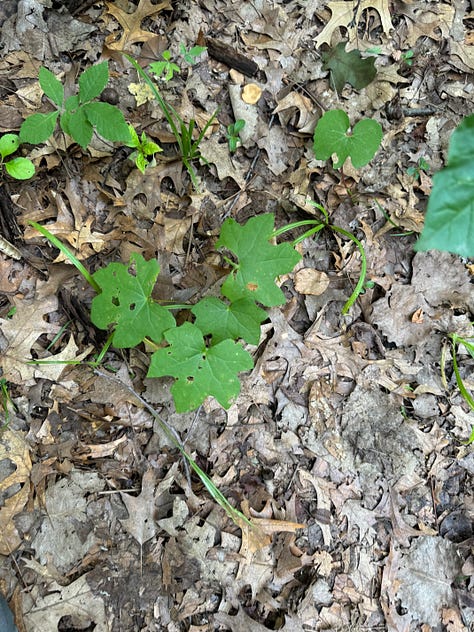
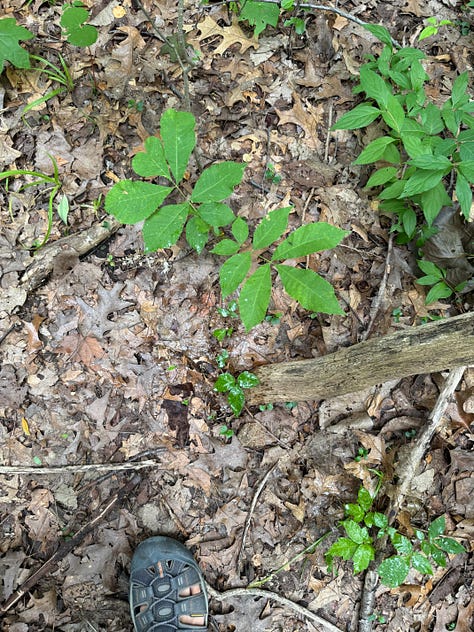
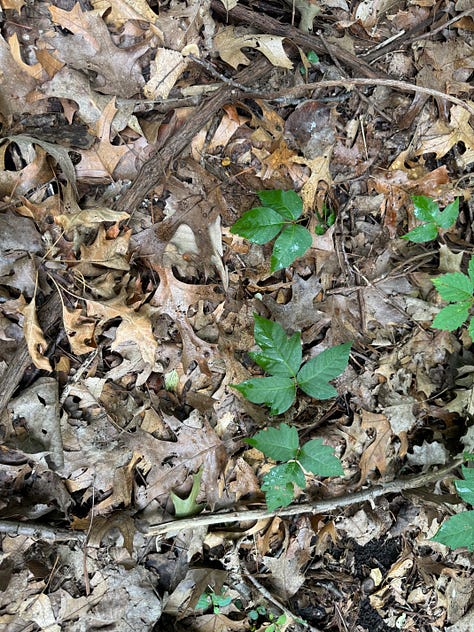
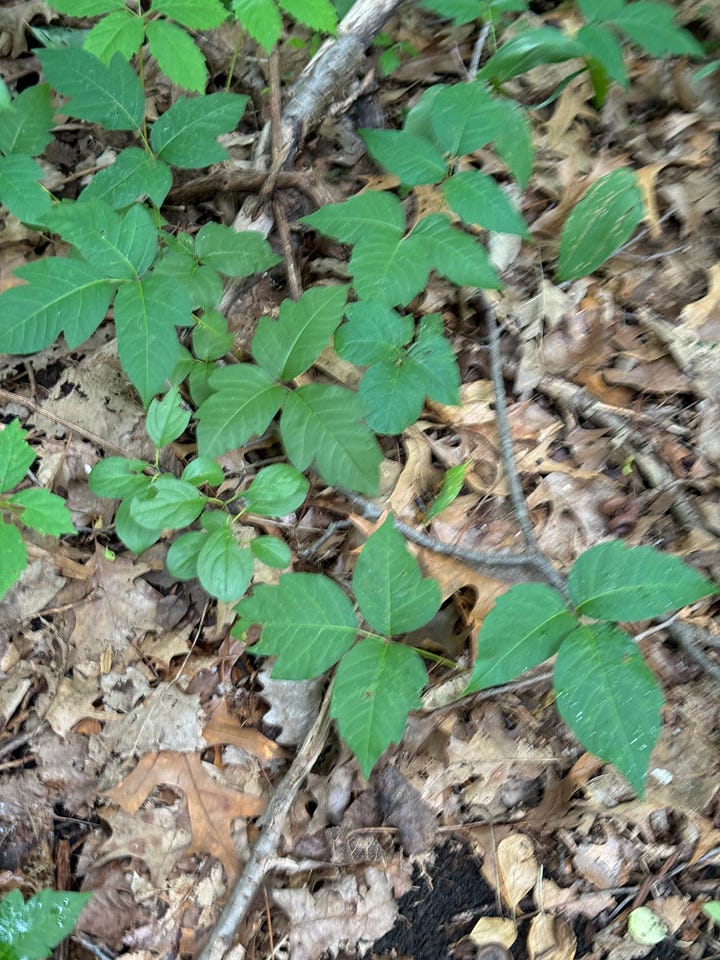
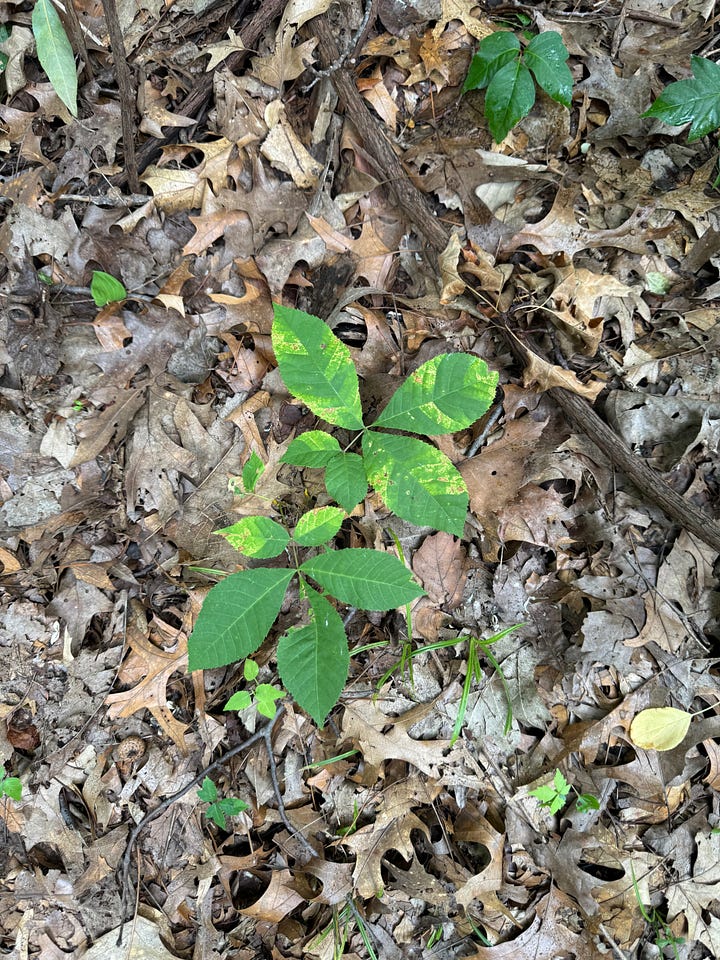
Here is a hard one:
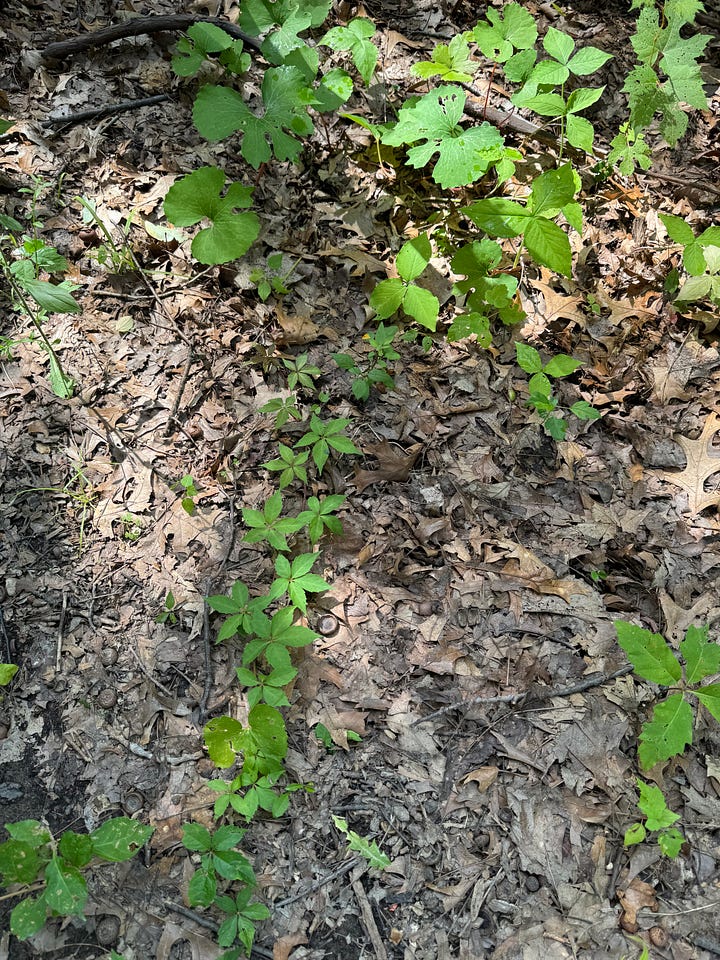
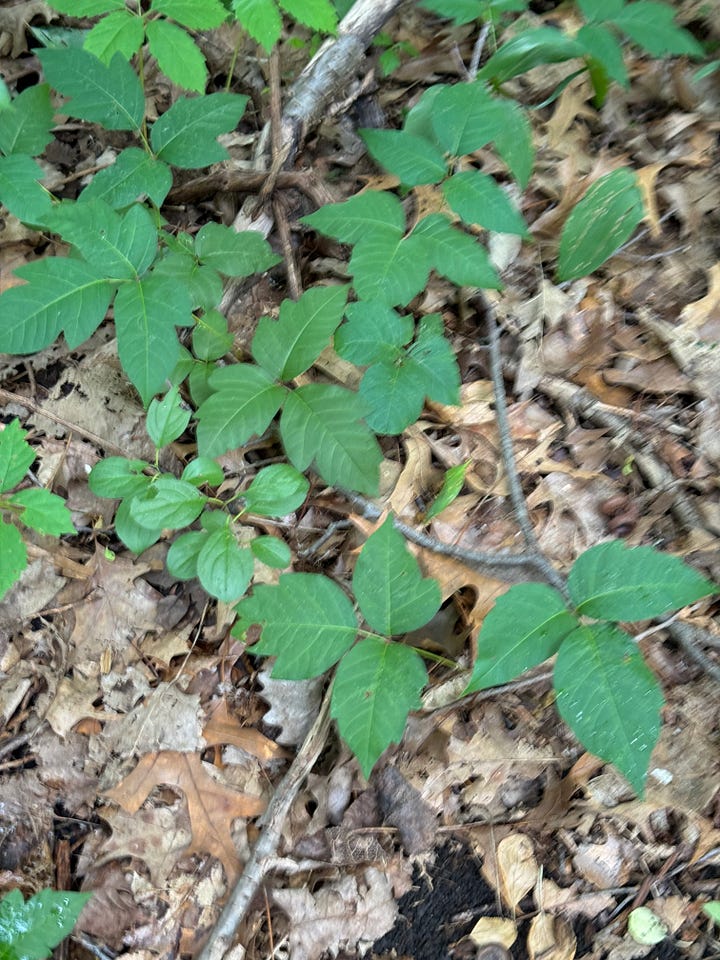
On the left you can see the five-leaved Virginia Creeper, wild grape on the upper left, and a young oak on the bottom right, but also some PI in the upper right and of course in the right photo as well.
OK, final exam. One of the rows below is PI. Top row or bottom row?
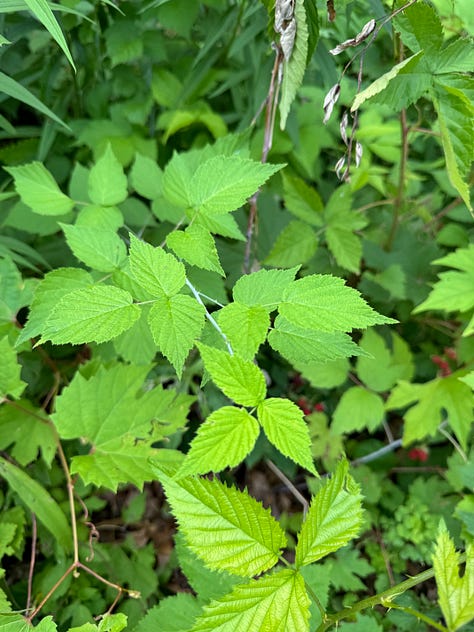
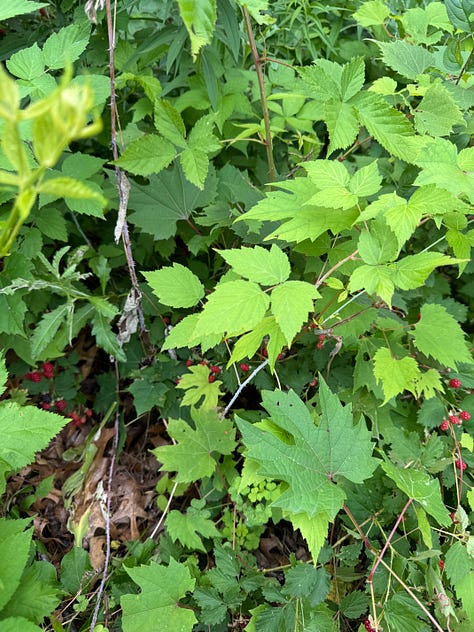
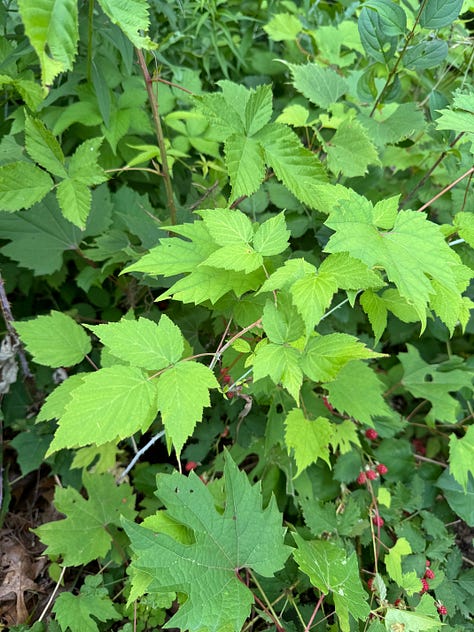
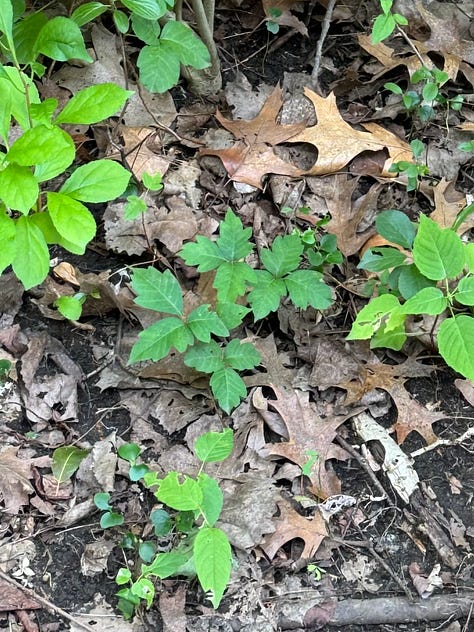
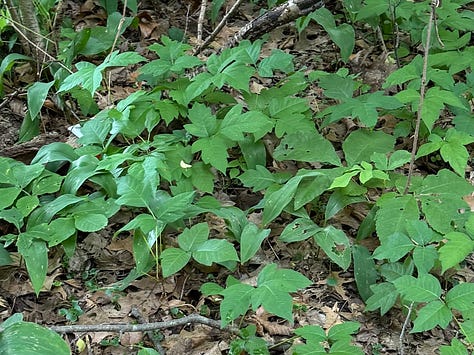
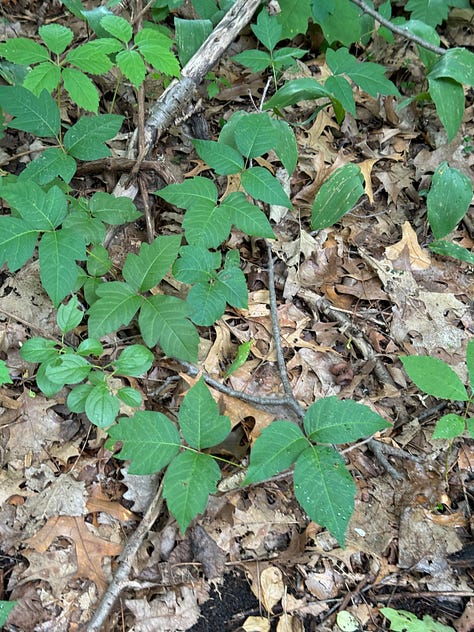
The bottom row is Poison Ivy, and the top row is Raspberry! If you see little stickers on the vine, it is raspberry not Poison Ivy. And the PI berries in the late summer or fall are white, not red or black.
If you like quizzes, check out this website, which has a real nice Poison Ivy Quiz.
I searched to try to find something good about PI. There are several things. First, the berries are a tasty treat for deer, birds and especially wild turkeys, of which we have plenty, as well as rabbits, chipmunks, toads and turtles.
Second, the roots provide soil stability.
Finally, the flowers provide nectar for butterflies, bees, and other nectar-loving insects.
I decided it was hopeless to spray the entire stream side. We can’t eliminate all the Poison Ivy in the world! There’s only so much we can control. And if we did eliminate it all, we could have lots worse problems, like serious erosion and the loss of wildlife habitat, and probably things that we can’t even dream of now.
But if we can understand the harm it can cause we can avoid that nasty rash. Yes, I did hit the PI on the path with Roundup. But there is so much of it around that I think it’s better to learn to live with it as best we can. And while the rash can be miserable, it isn’t fatal, and it doesn’t last forever.
The more we understand things the easier it is to live with them.
Meanwhile we have Race #4 of the Summer Series tonight. A big wind shift is supposed to hit at race time:
You can see that at 5:00 pm the wind should be a light 2-4 mph from the southeast, then flip to the northwest and then north at the start, blowing 21 with gusts to 25! Whoopee! I will keep you posted!
Watch out for big shifts and try to avoid getting too close to that Poison Ivy!
Thanks so much for reading. We are all in this together.



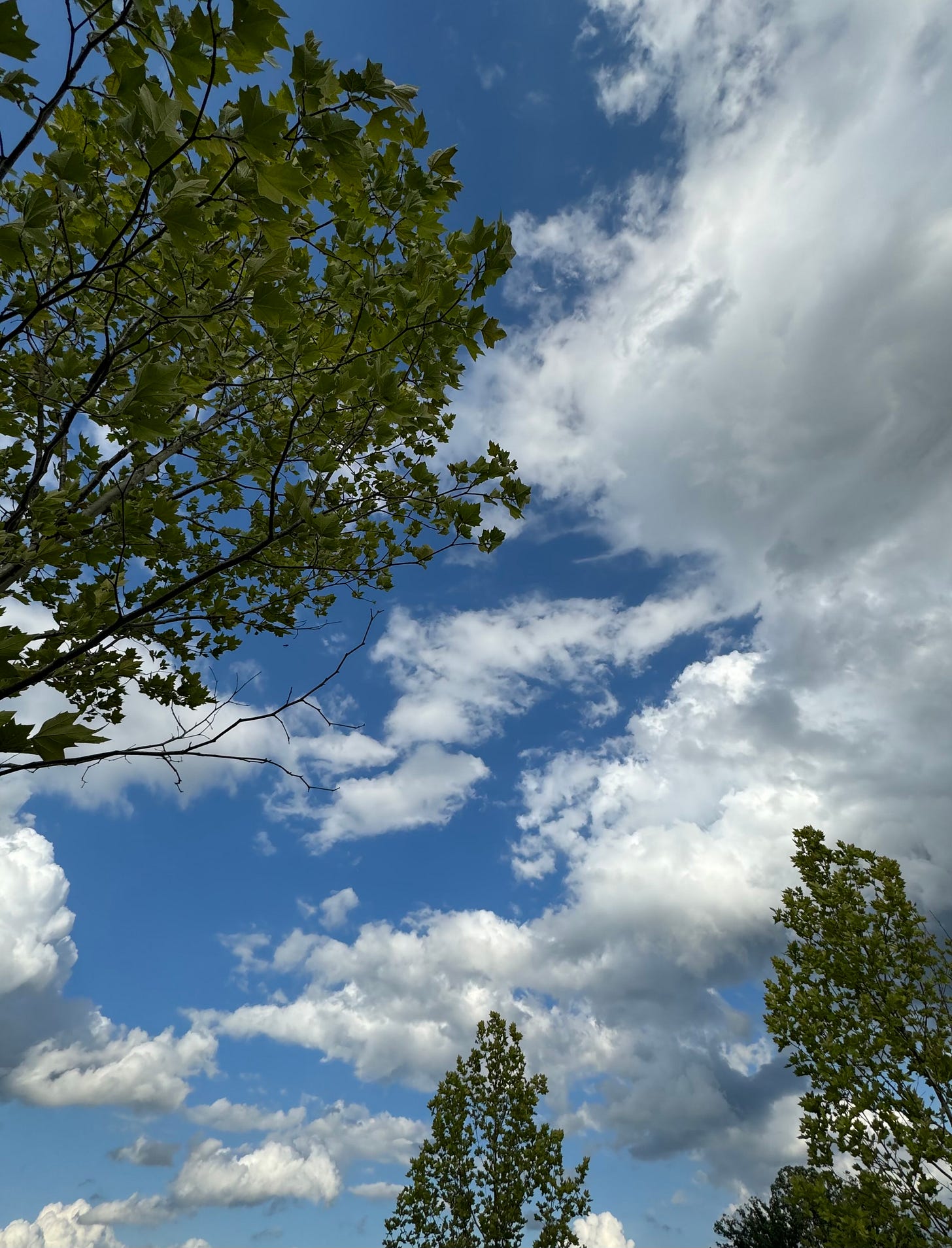
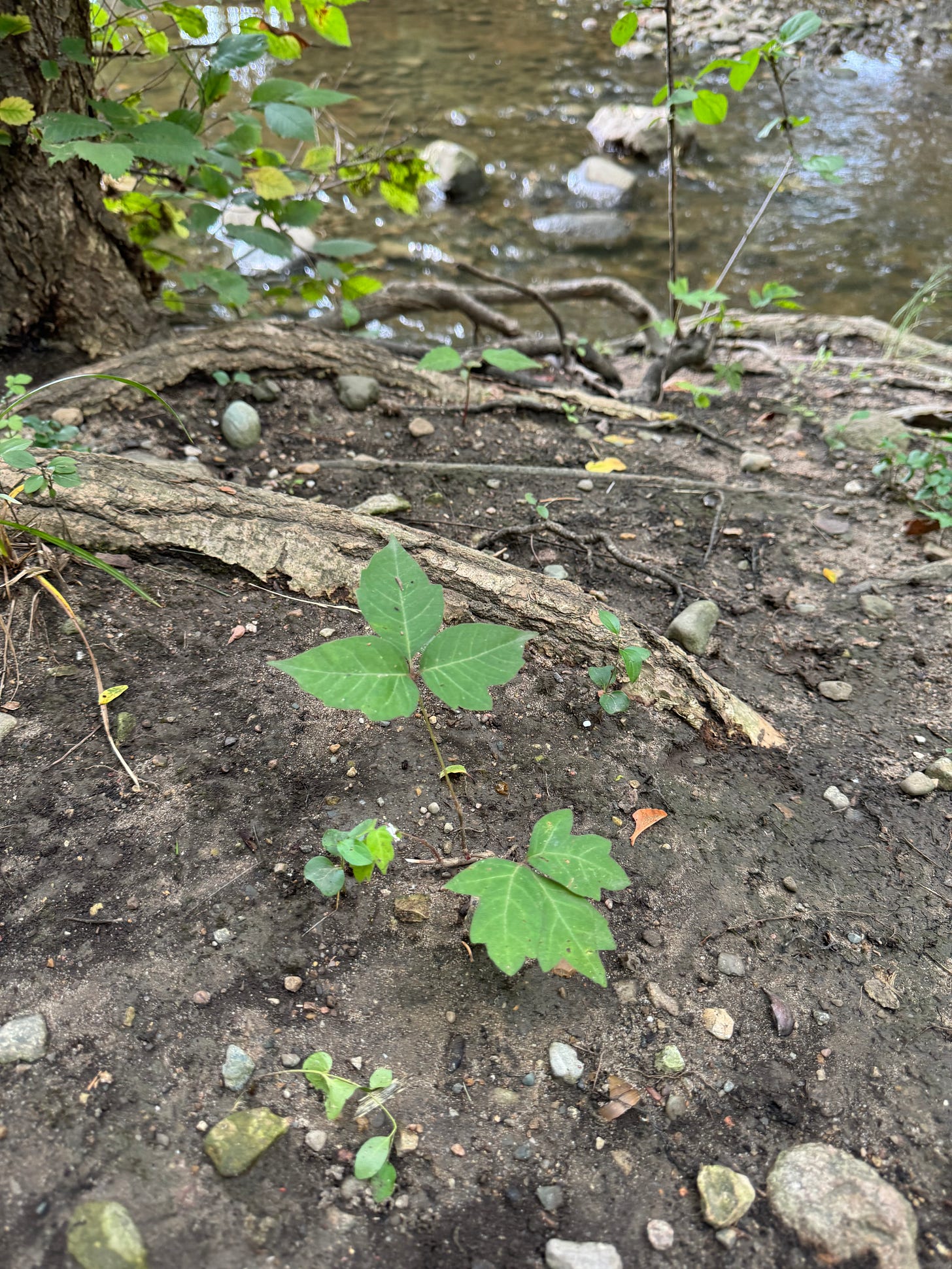
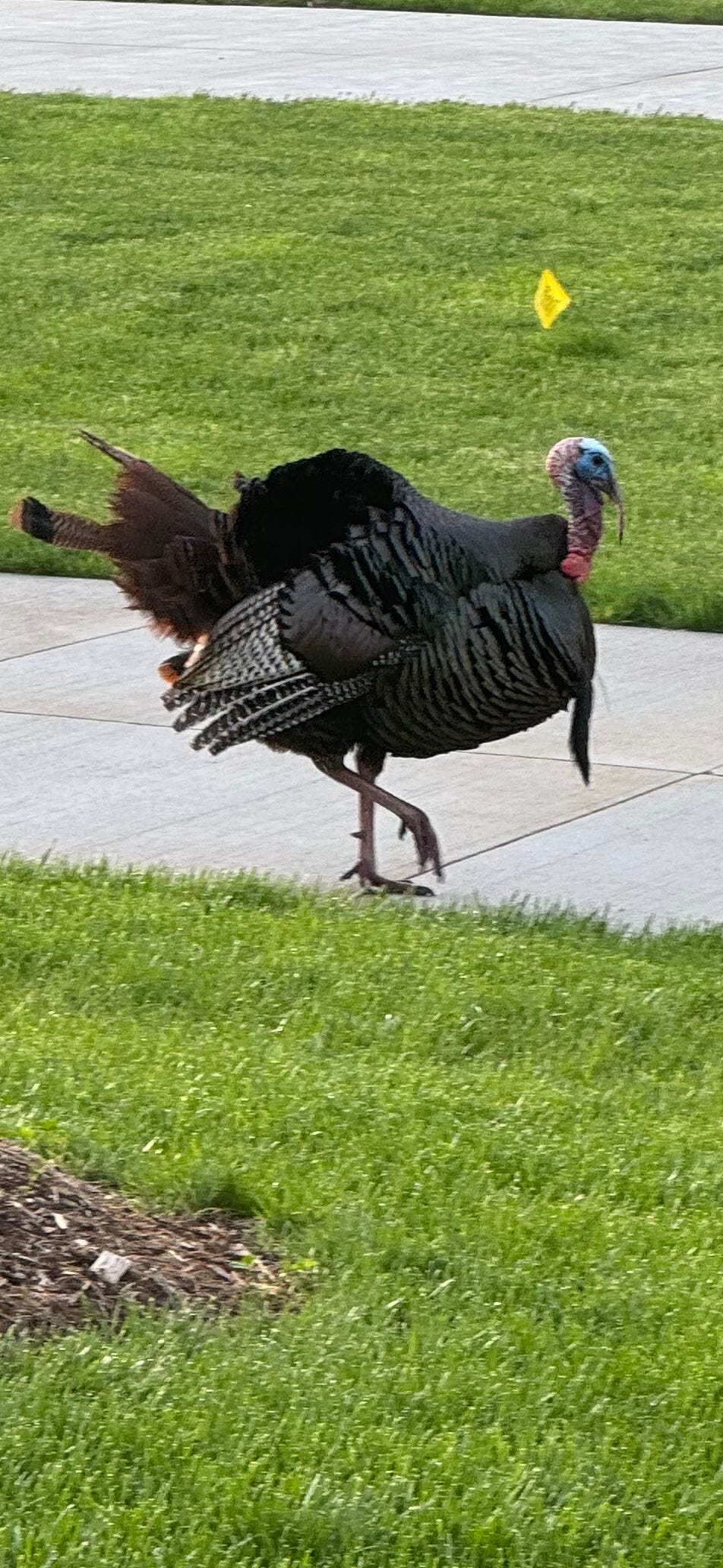

Thank goodness we dont have Poison ivy in the UK. The worst native we have is nettles and only a few people with sensitive skin get a bad rash from them,mostly it's just a sharp sting and in about 20 minutes nothing. We do have Giant Hogweed that can cause permanent skin damage but it's not a native,it was introduced in the 19th century to enhance big gardens because it is stunning. I've never seen it round here but I've heard it's prolific in the Midlands along all those canals. Of course it "escaped" those big gardens and seeded all over. Since the 1970s when the danger of it was identified there are groups that control it as much as they can and advice. Parents should teach their kids not to touch it. It's only dangerous if you break the stem and get the juice on your skin. Even more pernicious is that even if it's quickly and thoroughly washed off it does something to your skin and you can get reactions for the rest of your life where the juice was on your skin . But any other toxic plants we have you have to actively consume and as they are nasty and bitter you wouldnt do that. We are lucky. Our caretaker at the flats yesterday showed me a picture on his phone of an Adder he encountered on a walk up on the Mendips. This is our only poisonous snake and people do die from a bite sometimes but mostly they hear you coming along and slither away or so I'm told.
Poison Ivy, my kids super hero ? / villain - wanting to protect the environment at all costs…..
Maybe we need to tone down what the costs will be, there’s a lot of assumptions and outrage but is it naive of me to think it will be okay? That’s where I’m at!